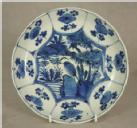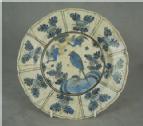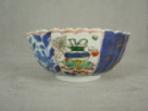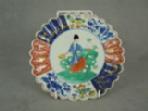Chinese Ceramics & the Early Modern World
7. Chinese Ceramics & the Early Modern World
Korean, and later Japanese and Annamese (Vietnamese) potters had ingredients that came closest to those available in China. They developed ceramic traditions that appropriated many of the elements of Chinese ceramics in combination with their own distinctive styles and characteristics. The Japanese made blue-and-white porcelain for export, but added new colours—gold, red, green—and new themes to the decorative schemes. In many places, including Southeast Asia and Africa, local traditions of ceramics manufacture largely disappeared because the Chinese wares were produced in such enormous quantities at very little cost. Recent archaeological discoveries made in Kilwa Bay on the East African coast reveal centuries of imports of Chinese ceramics.
By the middle of the seventeenth century, Dutch potters at Delft were consciously attempting to imitate Chinese colours and designs. Their creations were cheaper than the exotic commodities acquired from overseas, but no match for the light bodies and lustrous glazes of Chinese porcelains. Europeans tried for many years to make genuine porcelain vessels of their own. In 1671 John Dwight of Fulham claimed to have ‘discovered the mistery of transparent earthenware comonly knowne by the name of porcelain or China and Persian ware,’ but the results from his discovery never materialised. In 1708 researchers at Meissen in Germany were finally able to discover the secret of true porcelain manufacture, ending a Chinese monopoly that had stood for over a thousand years. In 1759 Josiah Wedgwood established a manufactory at Burslem, Staffordshire, and became extremely successful at producing hard-paste porcelains that competed with Chinese imports at the high end of the market. When the first ever British delegation arrived in China in 1793 under Lord Macartney (1737-1806) it proudly displayed a selection of British-made porcelain objects before the Qianlong emperor (r. 1736-1795), and Sir George Staunton (1737-1801) even went so far as to suggest that Chinese potters could learn from the latest discoveries made at home in Wedgwood’s factory.
The Chinese porcelain market was also influenced by the cultures of the regions to which it exported. Importers commissioned various forms and designs to suit the tastes of their own countries, and these could sometimes find their way into Chinese domestic markets as well. For a long time, Chinese ceramics specialists focused on wares made for the domestic market only, considering ‘export wares’ not only of inferior quality, but also of little interest to the history of ‘Chinese ceramics’. A number of recent excavations of late-Ming (c. 1580-1644) tombs have revealed that some high officials and rich merchants were buried with items that can only be described as ‘export wares’. This shows that many pieces of ‘export’ porcelain did actually stay within China, perhaps because the Chinese were attracted by what they viewed as exotic, European styles.


 (China).
(China).
 (Iran).
(Iran).
 (China).
(China). 
 (England).
(England). 